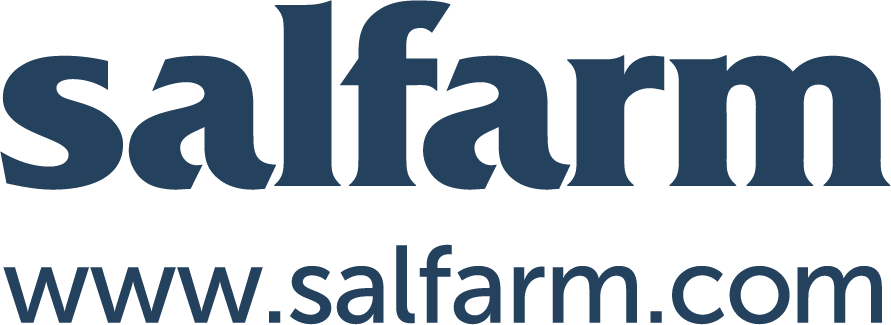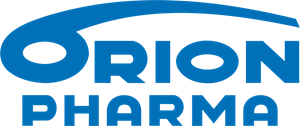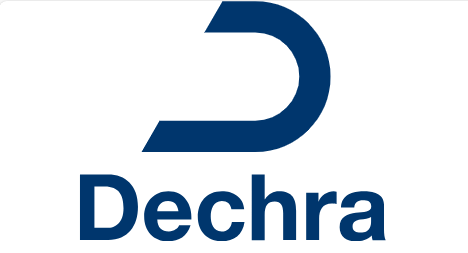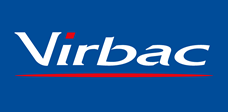Moxisolv LA
Active substance
ATC code
Species
Cattle
Indications
In cattle weighing from 100 to 500 kg body weight, treatment and prevention of mixed infestations by the following gastro-intestinal nematodes, respiratory nematodes and certain arthropod parasites:
Adult and immature gastro-intestinal nematodes:
Haemonchus placei
Haemonchus contortus
Ostertagia ostertagi (including inhibited larvae)
Trichostrongylus axei
Trichostrongylus colubriformis
Nematodirus helvetianus (adults only)
Nematodirus spathiger
Cooperia surnabada
Cooperia oncophora
Cooperia pectinata
Cooperia punctata
Oesophagostomum radiatum
Bunostomum phlebotomum (adults only)
Chabertia ovina (adults only) Trichuris spp. (adults only)
Adult and immature respiratory tract nematode: Dictyocaulus viviparus
Warble grubs (migrating larvae):
Hypoderma bovis Hypoderma lineatum
Lice:
Linognathus vituli
Haematopinus eurysternus
Solenopotes capillatus
Bovicola bovis (reduction of infestation)
Mange mites:
Sarcoptes scabiei
Psoroptes ovis
Chorioptes bovis (reduction of infestation)
Moxidectin has a persistent action and protects cattle for a certain duration against infection or re-infection with the following parasites for the period indicated:
|
Species: |
Protection period (days): |
|
Dictyocaulus viviparus |
120 |
|
Ostertagia ostertagi |
120 |
|
Haemonchus placei |
90 |
|
Oesophagostomum radiatum |
150 |
|
Trichostrongylus axei |
90 |
|
Linognathus vituli |
133 |
The veterinary medicinal product is effective against Hypoderma larvae at the time of treatment but its persistent activity against Hypoderma has not been evaluated. If the veterinary medicinal product is given before the end of the fly season complimentary treatment with a product effective against Hypoderma may be required.
Persistent efficacy periods have not been established for parasite species other than those included in the above list. Therefore, re-infection of animals on pasture contaminated by parasites other than these remains possible before the end of the 90-day minimum persistency period demonstrated for specific species.
Dose to be administered and administration route
Subcutaneous use.
Dosage is 1.0 mg moxidectin per kg bodyweight (equivalent to 0.5 ml of the veterinary medicinal product per 50 kg bodyweight), given by a single subcutaneous injection in the ear using an 18 gauge, 25 – 40 mm hypodermic needle. The 50 ml vial stoppers must not be broached more than 30 times, and the 200 ml vial stoppers must not be punctured more than 50 times. Use automatic syringe equipment for the 200 ml fill size.
Shake well before use.
Underdosing could result in ineffective use and may favour resistance development. To ensure a correct dosage, body weight should be determined as accurately as possible. If animals are to be treated collectively, reasonably homogenous groups should be set up, and all animals of a group should be dosed at the rate corresponding to the heaviest one.
Accuracy of the dosing device should be thoroughly checked.
The injection should be given subcutaneously in the loose tissues on the dorsal surface of the ear, just distal to the distal edge of the auricular cartilage. The dorsal (outer) surface of the ear should first be cleansed with antiseptic and allowed to briefly air dry. Palpate the edge of the auricular cartilage closest to the head, on the dorsal (hairy) surface of the ear. From this landmark, taking care to avoid blood vessels (artery, vein), the needle should be inserted subcutaneously starting at a point approximately 3 to 3.5 cm distal to this edge (away from the head), and directed towards the base of the ear, and the needle advanced to the hub. At this point, gently aspirate the syringe to confirm that the needle is not in a blood vessel. Upon injection, the resulting depot should reside just distal to the edge of the auricular cartilage.
Following administration, the needle is withdrawn from the skin as pressure is applied for several seconds with the thumb at the point of insertion.
Due to the long lasting protection against Dictyocaulus viviparus and the stomach worms, Ostertagia ostertagi and Haemonchus placei, a single treatment with the formulation at turn-out helps control parasitic bronchitis (lungworm) and parasitic gastro-enteritis throughout the grazing season by reducing the build-up of infective larvae on pasture associated with these parasites.
Diagram: Ear injection procedure
•  The injection site is approximately 3.5 cm (1.5 inches) distal to the distal edge of the auricular cartilage
The injection site is approximately 3.5 cm (1.5 inches) distal to the distal edge of the auricular cartilage
• Use one hand to grasp and steady the ear.
• Inject subcutaneously using an 18gauge x 1inch needle.
• Inject contents. Depot should be just distal to the distal edge of the auricular cartilage.
• Apply pressure at the point of insertion as the needle is withdrawn from the skin to help seal the opening.
Adverse reactions
Cattle
|
Rare (1 to 10 animals / 10,000 animals treated): |
Injection site swelling1,3, Depression, Ataxia |
|
Very rare (<1 animal / 10,000 animals treated, including isolated reports): |
Hypersensitivity reaction4 Injection site abscess2,3 |
1Immediate or delayed. The frequency tends to be higher in the heavier animals.
2Swellings may further develop into abscesses (approx. 1% of cases).
3These side effects generally disappear without treatment, within 14 days after administration, some may persist for up to 5 weeks in a number of animals (<5%) and in very rare occasions longer.
4Symptomatic treatment should be applied.
Reporting adverse events is important. It allows continuous safety monitoring of a veterinary medicinal product. Reports should be sent, preferably via a veterinarian, to either the marketing authorisation holder or its local representative or the national competent authority via the national reporting system. See the package leaflet for respective contact details.
Dispensing
POM-VPS - Prescription Only Medicine – Veterinarian, Pharmacist, SQPSUMMARY OF PRODUCT CHARACTERISTICS
1. NAME OF THE VETERINARY MEDICINAL PRODUCT
Moxisolv LA 100 mg/ml Solution for Injection for Cattle
2. QUALITATIVE AND QUANTITATIVE COMPOSITION
Each ml contains:
Active substance:
|
Moxidectin Excipients: |
100 mg |
|
Benzyl Alcohol (E1519) |
70 mg |
For the full list of excipients, see section 6.1.
3. PHARMACEUTICAL FORM
Solution for injection.
Clear yellow solution free from any particulate matter.
4. CLINICAL PARTICULARS
4.1 Target species
Cattle
4.2 Indications for use, specifying the target species
In cattle weighing from 100 to 500 kg body weight, treatment and prevention of mixed infestations by the following gastro-intestinal nematodes, respiratory nematodes and certain arthropod parasites:
Adult and immature gastro-intestinal nematodes:
Haemonchus placei
Haemonchus contortus
Ostertagia ostertagi (including inhibited larvae)
Trichostrongylus axei
Trichostrongylus colubriformis
Nematodirus helvetianus (adults only)
Nematodirus spathiger
Cooperia surnabada
Cooperia oncophora
Cooperia pectinata
Cooperia punctata
Oesophagostomum radiatum
Bunostomum phlebotomum (adults only)
Chabertia ovina (adults only) Trichuris spp. (adults only)
Adult and immature respiratory tract nematode: Dictyocaulus viviparus
Warble grubs (migrating larvae):
Hypoderma bovis Hypoderma lineatum
Lice:
Linognathus vituli
Haematopinus eurysternus
Solenopotes capillatus
Bovicola bovis (reduction of infestation)
Mange mites:
Sarcoptes scabiei
Psoroptes ovis
Chorioptes bovis (reduction of infestation)
Moxidectin has a persistent action and protects cattle for a certain duration against infection or re-infection with the following parasites for the period indicated:
|
Species: |
Protection period (days): |
|
Dictyocaulus viviparus |
120 |
|
Ostertagia ostertagi |
120 |
|
Haemonchus placei |
90 |
|
Oesophagostomum radiatum |
150 |
|
Trichostrongylus axei |
90 |
|
Linognathus vituli |
133 |
The veterinary medicinal product is effective against Hypoderma larvae at the time of treatment but its persistent activity against Hypoderma has not been evaluated. If the veterinary medicinal product is given before the end of the fly season complimentary treatment with a product effective against Hypoderma may be required.
Persistent efficacy periods have not been established for parasite species other than those included in the above list. Therefore, re-infection of animals on pasture contaminated by parasites other than these remains possible before the end of the 90-day minimum persistency period demonstrated for specific species.
4.3 Contraindications
Do not use in animals less than 100 kg bodyweight or greater than 500 kg.
Do not inject the veterinary medicinal product by intravascular route. Intravascular injection may result in ataxia, paralysis, convulsions, collapse and death. To prevent any intravascular injection, carefully follow the administration procedure described in item “Amounts to be administered and administration route”.
Do not use in cases of hypersensitivity to the active substance, or to any of the excipients.
4.4 Special warnings for each target species
Unnecessary use of antiparasitics or use deviating from the instructions given in the SPC may increase the resistance selection pressure and lead to reduced efficacy. The decision to use the product should be based on confirmation of the parasitic species and burden, or of the risk of infestation based on its epidemiological features, for each herd.
Repeated use for an extended period, particularly when using the same class of substance, increases the risk of resistance development. Within a herd, maintenance of susceptible refugia is essential to reduce that risk. Systematically applied interval-based treatment and treatment of a whole herd should be avoided. Instead, if feasible, only selected individual animals or subgroups should be treated (targeted selective treatment). This should be combined with appropriate husbandry and pasture management measures. Guidance for each specific herd should be sought from the responsible veterinarian.
Partial cross-resistance between ivermectin and moxidectin has been reported in nematode parasites. Cases of resistance to moxidectin have been reported in Cooperia, Ostertagia, Oesophagostomum and Trichuris genera of gastrointestinal nematode parasites of cattle and in Psoroptes mites, in the EU and elsewhere.
The use of this product should take into account local information about susceptibility of the target parasites, where available.
It is recommended to further investigate cases of suspected resistance, using an appropriate diagnostic method (e.g. Faecal Egg Count Reduction Test (FECRT)).
Confirmed resistance should be reported to the marketing authorisation holder or to the competent authority.
4.5 Special precautions for use
Special precautions for use in animals
In order to prevent abscesses, a strict aseptic technique is recommended. The veterinary medicinal product has been formulated specifically for subcutaneous injection in dorsal surface of the ear of cattle and must not be given by any other route of administration or to any other species.
To avoid possible secondary reactions by the death of Hypoderma larvae in the spine or the oesophagus of animals, it is recommended to administer a product effective against Hypoderma larvae after the end of fly activity and before the larvae reach their resting sites. Consult your veterinary surgeon on the correct timing of this treatment.
Immunity to nematodes depends on adequate exposure to infection. Although not normally the case, circumstances could occur in which anthelmintic control measures might increase the vulnerability of cattle to re-infection. Animals may be at risk towards the end of their first grazing season, particularly if the season is long, or in the following year if they move onto heavily contaminated pasture. In such instances, further control measures may be necessary.
Special precautions to be taken by the person administering the veterinary medicinal product to animals
Moxidectin or benzyl alcohol may cause hypersensitivity (allergic reactions). People with known hypersensitivity to moxidectin or benzyl alcohol should avoid contact with the product.
The product may cause skin and eye irritation. Avoid direct contact with skin and eyes. If skin or eye irritation occur, wash with plenty of water.
Wash hands after use.
Do not smoke, drink or eat while handling the product.
Take care to avoid self-injection. In case of accidental self-injection, seek medical advice.
Advice to medical practitioners in case of accidental self-injection: Treat symptomatically.
Other precautions regarding impact on the environment
Moxidectin fulfils the criteria for a (very) persistent, bioaccumulative and toxic (PBT) substance; therefore, exposure of the environment to moxidectin must be limited to the extent possible.
Treatments should be administered only when necessary and should be based on faecal egg counts or evaluation of the risk of infestation at the animal and/or herd level.
Like other macrocyclic lactones, moxidectin has the potential to adversely affect nontarget organisms:
• Faeces containing moxidectin excreted onto pasture by treated animals may temporarily reduce the abundance of dung feeding organisms. Following treatment of cattle with the product, levels of moxidectin that are potentially toxic to dung fly species may be excreted over a period more than 4 weeks and may decrease dung fly abundance during that period. It has been established in laboratory tests that moxidectin may temporarily affect dung beetle reproduction; however, field studies indicate no long-term effects. Nevertheless, in case of repeated treatments with moxidectin (as with products of the same anthelmintic class) it is advisable not to treat animals every time on the same pasture to allow dung fauna populations to recover.
• Moxidectin is inherently toxic to aquatic organisms including fish. The product should be used only according to the label instructions. Based on the excretion profile of moxidectin when administered as the injectable formulation, treated animals should not have access to watercourses during the 10 days after treatment.
4.6 Adverse reactions (frequency and seriousness)
Immediate or delayed swelling can be observed at the injection site on rare occasions. These swellings may further develop into abscesses (approx. 1% of cases). The frequency of injection site swellings tends to be higher in the heavier animals. These side effects generally disappear without treatment, within 14 days after administration, some may persist for up to 5 weeks in a number of animals (<5%) and in very rare occasions longer.
Depression and ataxia can be observed on rare occasions after injection.
In case of hypersensitivity reactions, a symptomatic treatment should be applied.
The frequency of adverse reactions is defined using the following convention:
- very common (more than 1 in 10 animals treated displaying adverse reaction(s))
- common (more than 1 but less than 10 animals in 100 animals treated)
- uncommon (more than 1 but less than 10 animals in 1,000 animals treated)
- rare (more than 1 but less than 10 animals in 10,000 animals treated)
- very rare (less than 1 animal in 10,000 animals treated, including isolated reports).
4.7 Use during pregnancy, lactation or lay
Can be used during pregnancy. However, note 4.3 Contraindications, and 4.11 Withdrawal periods.
4.8 Interaction with other medicinal products and other forms of interaction
The effects of GABA agonists are increased by moxidectin.
4.9 Amounts to be administered and administration route
Subcutaneous use.
Dosage is 1.0 mg moxidectin per kg bodyweight (equivalent to 0.5 ml of the veterinary medicinal product per 50 kg bodyweight), given by a single subcutaneous injection in the ear using an 18 gauge, 25 – 40 mm hypodermic needle. The 50 ml vial stoppers must not be broached more than 30 times, and the 200 ml vial stoppers must not be punctured more than 50 times. Use automatic syringe equipment for the 200 ml fill size.
Shake well before use.
Underdosing could result in ineffective use and may favour resistance development. To ensure a correct dosage, body weight should be determined as accurately as possible. If animals are to be treated collectively, reasonably homogenous groups should be set up, and all animals of a group should be dosed at the rate corresponding to the heaviest one.
Accuracy of the dosing device should be thoroughly checked.
The injection should be given subcutaneously in the loose tissues on the dorsal surface of the ear, just distal to the distal edge of the auricular cartilage. The dorsal (outer) surface of the ear should first be cleansed with antiseptic and allowed to briefly air dry. Palpate the edge of the auricular cartilage closest to the head, on the dorsal (hairy) surface of the ear. From this landmark, taking care to avoid blood vessels (artery, vein), the needle should be inserted subcutaneously starting at a point approximately 3 to 3.5 cm distal to this edge (away from the head), and directed towards the base of the ear, and the needle advanced to the hub. At this point, gently aspirate the syringe to confirm that the needle is not in a blood vessel. Upon injection, the resulting depot should reside just distal to the edge of the auricular cartilage.
Following administration, the needle is withdrawn from the skin as pressure is applied for several seconds with the thumb at the point of insertion.
Due to the long lasting protection against Dictyocaulus viviparus and the stomach worms, Ostertagia ostertagi and Haemonchus placei, a single treatment with the formulation at turn-out helps control parasitic bronchitis (lungworm) and parasitic gastro-enteritis throughout the grazing season by reducing the build-up of infective larvae on pasture associated with these parasites.
Diagram: Ear injection procedure
•  The injection site is approximately 3.5 cm (1.5 inches) distal to the distal edge of the auricular cartilage
The injection site is approximately 3.5 cm (1.5 inches) distal to the distal edge of the auricular cartilage
• Use one hand to grasp and steady the ear.
• Inject subcutaneously using an 18gauge x 1inch needle.
• Inject contents. Depot should be just distal to the distal edge of the auricular cartilage.
• Apply pressure at the point of insertion as the needle is withdrawn from the skin to help seal the opening.
4.10 Overdose (symptoms, emergency procedures, antidotes), if necessary
Reactions at the injection site have to be expected more frequently and severe depending on the injected volume. Systemic clinical signs of overdose are consistent with the mode of action of moxidectin. These clinical signs are manifested as transient salivation, depression, drowsiness and ataxia 24 to 36 hours posttreatment. The systemic clinical signs usually disappear within 36 to 72 hours without treatment. At doses >3 times the recommended dose divided on both ears, the systemic clinical signs included recumbency, muscle tremor, ruminal tympany and dehydration, which were resolved after treatment with fluids. The systemic clinical signs can last for a few days to ten days. There is no specific antidote.
4.11 Withdrawal periods
Meat and offal: 108 days.
Milk: Not authorised for use in animals producing milk for human consumption. Do not use in pregnant animals which are intended to produce milk for human consumption within 80 days of expected parturition.
The withdrawal period is based solely on a single injection at the ear site of injection.
5. PHARMACOLOGICAL PROPERTIES
Pharmacotherapeutic group: Endectocides ATC vet code: QP54AB02
5.1 Pharmacodynamic properties
Moxidectin is an endectocide active against a wide range of internal and external parasites and is a second-generation macrocyclic lactone of the milbemycin family.
Moxidectin interacts with GABA and glutamate gated chloride channels. The net effect is to open the chloride channels on the postsynaptic junction to allow the inflow of chloride ions and induce an irreversible resting state. This results in flaccid paralysis and eventual death of parasites exposed to the drug.
The exact mechanisms of parasite resistance to moxidectin have not been elucidated. A resistance mechanism involving metabolism by p-glycoproteins and efflux from the cells by ABC transporters has been proposed for ivermectin and a similar mechanism is thought to play a role in moxidectin resistance. However, parasites resistant to ivermectin are known to show some degree but not complete cross-resistance to moxidectin. It has been proposed that the reason for the incomplete cross-resistance is that there are multiple avenues of moxidectin action in target parasites that may include receptors other than the Glutamate-gated chloride channels.
5.2 Pharmacokinetic particulars
Moxidectin is absorbed following subcutaneous injection with maximum blood concentrations being achieved 24 to 48 hours post injection. The drug is distributed throughout the body tissues but due to its lipophilicity it is concentrated mainly in the fat. The depletion half-life in fat is 26 – 32 days.
Moxidectin undergoes limited biotransformation by hydroxylation in the body. The only significant route of excretion is the faeces.
5.3 Environmental properties
Moxidectin fulfils the criteria for a (very) persistent, bioaccumulative and toxic (PBT) substance. In particular, in acute and chronic toxicity studies with algae, crustaceans and fish, moxidectin showed toxicity to these organisms, yielding the following endpoints:
|
|
Organism |
EC50 |
NOEC |
|
Algae |
S. capricornutum |
>86.9 µg/l |
86.9 µg/l |
|
Crustaceans (Water fleas) |
Daphnia magna (acute) |
0.0302 µg/l |
0.011 µg/l |
|
Daphnia magna (reproduction) |
0.0031 µg/l |
0.010 µg/l |
|
|
Fish |
O. mykiss |
0.160 µg/l |
Not determined |
|
|
L. macrochirus |
0.620 µg/l |
0.52 µg/l |
|
|
P. promelas (early life stages) |
Not applicable |
0.0032 µg/l |
|
|
Cyprinus carpio |
0.11 µg/l |
Not determined |
EC50: the concentration which results in 50% of the test species individuals being
adversely affected, i.e. both mortality and sub-lethal effects
NOEC: the concentration in the study at which no effects are observed.
This implies that when allowing moxidectin to enter water bodies, this may have a severe and lasting impact on aquatic life. To mitigate this risk, all precautions for use and disposal must be adhered to.
6. PHARMACEUTICAL PARTICULARS
6.1 List of excipients
Benzyl Alcohol (E1519)
Sorbitan Oleate
Propylene Glycol Dicaprylocaprate
6.2 Major incompatibilities
In the absence of compatibility studies, this veterinary medicinal product must not be mixed with other veterinary medicinal products.
6.3 Shelf life
Shelf life of the veterinary medicinal product as packaged for sale: 2 years. Shelf life after first opening the immediate packaging: 28 days.
6.4 Special precautions for storage
This veterinary medicinal product does not require any special storage conditions.
6.5 Nature and composition of immediate packaging
HDPE bottle closed with a type I grey chlorobutyl rubber stopper and sealed with an aluminium overseal.
Pack size:
Carton box with 1 bottle containing 50 ml of product.
Carton box with 1 bottle containing 200 ml of product.
Not all pack sizes may be marketed.
6.6 Special precautions for the disposal of unused veterinary medicinal product or waste materials derived from the use of such products
Any unused veterinary medicinal product or waste materials derived from such veterinary medicinal products should be disposed of in accordance with local requirements. Do not contaminate watercourses with the product.
7. MARKETING AUTHORISATION HOLDER
Bimeda Animal Health Limited
Unit 2 / 3 / 4 Airton Close
Tallaght
Dublin 24 Ireland
8. MARKETING AUTHORISATION NUMBER
Vm 50416/5001
9. DATE OF FIRST AUTHORISATION
31 March 2023
10. DATE OF REVISION OF THE TEXT
March 2023
Approved 31 March 2023
![]()

| Art. Nr. | 50146/5001 |
|---|---|
| EAN | 5391510239123 |
 TRUSTED SOURCE
TRUSTED SOURCE








